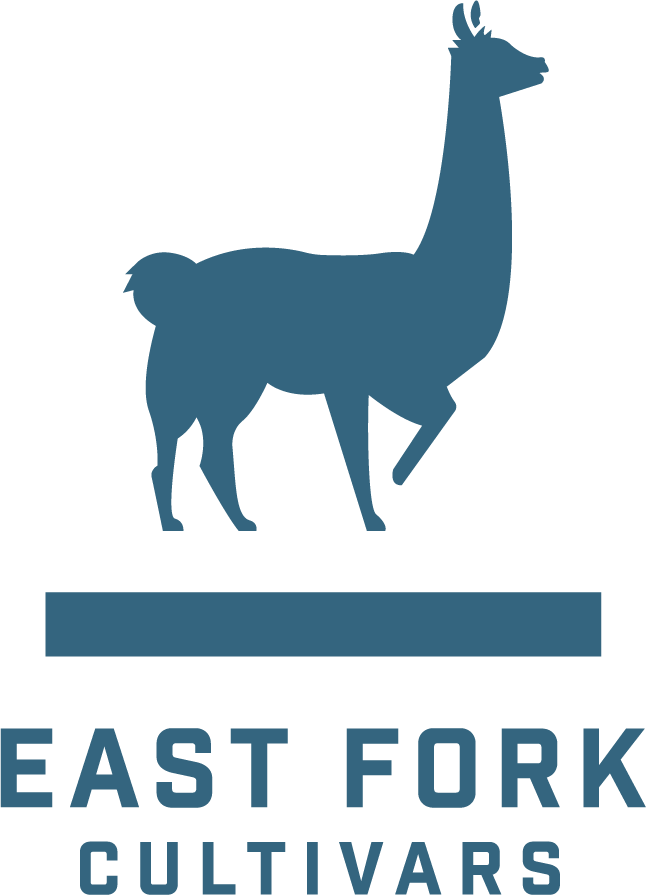How We Dry Hemp Flower in a Kiln
Each season, East Fork Cultivars grows around nine acres of USDA Organic Certified hemp. Our hemp is carefully bred and cultivated for its resinous flower buds, the part of the plant that produces exciting compounds like CBD, CBG, aromatic compounds, and much more.
Drying hemp flowers that preserve therapeutic compounds takes a lot of planning, care, and refined infrastructure, particularly at scale.
The hemp season begins when we germinate seed in May, and concludes when our plants mature in October. When plants reach maturity, we first hand-harvest the largest flower-bearing branches, cutting these "tops" and hang-drying them in our climate controlled rooms to preserve the structure and aroma of the flowers. This drying method, practiced for decades in the craft cannabis community, is used for all of East Fork's flower products and full-spectrum extracts.
Once hemp tops are taken, we take a second pass on our hemp fields to harvest the remaining, smaller flower buds. To dry this portion of our harvest we borrow best practices from a cousin of cannabis: hops.
Hops, the aromatic flowers added to beer to give it bitterness and flavor, are in the Cannabaceae family, a group of plants that also include — you guessed it — cannabis. When deciding on how to dry our hemp harvest, we drew inspiration from our friends at Horn Creek Hemp. This fellow Southern Oregon farm modified hops drying equipment to make a system that effectively dries hemp flowers.
We adapted Horn Creek's design, creating our own kiln that's capable of drying up to 500 lbs. of hemp flower per day.
How it works
First, we harvest the small flower-bearing branches from our hemp fields and bring them to our harvest intake area. Next, we de-stem the flowers, using a combination of de-stemming machines and hand strength to remove all flower buds from the stem. After we de-stem the hemp flowers, we load them in bins and lift them up to our kiln on an old hay elevator that we rescued and restored from a rusty heap.
The wet hemp flowers are then dumped into the top of our kiln, where they rest on a series of slotted metal panels. These panels allow for air to flow through while keeping the hemp from falling to the ground below.
To dry the hemp, a powerful centrifugal fan spinning at several thousand revolutions per minute pushes heated air up through the kiln, forcing through the hemp and escaping through vents in the roof.
An advanced computer and software system carefully monitors the conditions of the kiln, adjusting heat and airflow to maintain a steady temperature and pressure to evenly dry the hemp while maintaining quality throughout the process.
After 24 hours, the dried hemp is dropped to the bottom of the kiln by rotating the slotted panels. A trap door allows access to the bottom of the kiln from inside our long-term storage warehouse. An East Fork team member props the trap door open, collects the dried hemp flowers, then carefully weighs, packages, and labels each batch for storage.
The resulting "kiln-dried" hemp is primarily used in East Fork's USDA Organic Certified extracts, which are provided to our product-maker partners to formulate products ranging from topicals to tinctures to CBD beverages.
Our combination of skilled hand-work by our team and strategic use of agricultural systems allows us to offer high-quality, USDA Organic hemp ingredients at scale. We’re able to maintain therapeutic compounds and flower structure while minimizing damage to the plant thanks to our kiln-drying system.
















